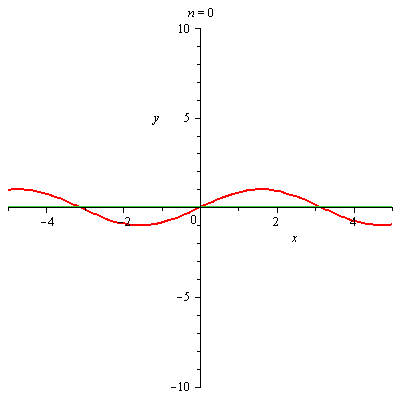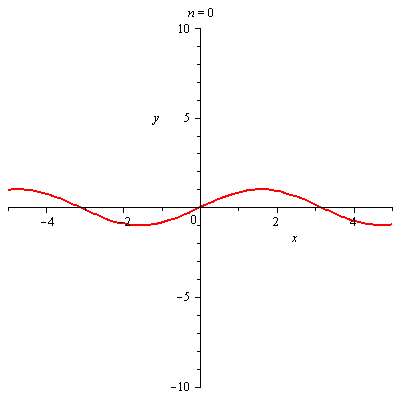Taylorovy polynomy zadané funkce: sin(x)
| > | # initialize
restart; with(plots); f:=sin(x); # nmax is the maximum approximation order (the order of the Taylor polynomial + 1) nmax:=9; setoptions(thickness=2); |
| (1) |
| > | # initialize the lists T and R
T:=[seq(0,i=1..nmax+1)]; R:=T; # now calculate the Taylor polynomials for n from 1 to nmax do T[n]:=convert(taylor(f,x,n),polynom); R[n]:=f-T[n]; end do; n:='n'; |
| (2) |
Graf funkce a jejího n-tého Taylorova polynomu
| > | # n goes from 0 to nmax-1 to represent the order of the Taylor polynomial
plots[animate](plot,[[f,T[n+1]],x=-5..5,y=-10..10],n=[seq(i,i=0..nmax-1)]); |
 |
Graf zbytku po n-tém Taylorově polynomu
| > | animate(plot,[R[n+1],x=-5..5,y=-10..10],n=[seq(i,i=0..nmax-1)]); |
 |
| > |